The 5 most important factors for cats transit riders
At the January 25th meeting of the Charlotte City Council’s Transportation, Planning, and Environment Committee, city staff presented updates on rider satisfaction with CATS service, an update on planning for the LYNX Silver Line Light Rail, and the path for Council to adopt the Charlotte Future 2040 Comprehensive Plan.
View the meeting presentations here. View recorded video of the meeting on the City of Charlotte’s YouTube or Facebook page.
Charlotte Area Transit System (CATS) CEO John Lewis shared a summary of the agency’s latest rider satisfaction survey. Not surprisingly, Buses arrive on time was ranked by CATS riders as their highest concern. Rounding out the top 5 (in descending order of importance were:
2. Fare price: Local fare on buses and light rail is $2.20 one-way, and hasn’t increased in seven years.
3. Hours of operation: Since the pandemic has dramatically changed work for tens of thousands of area residents, commute patterns on CATS vehicles have also changed. Instead of strong a.m. and p.m. peak hours, there has been a jump in ridership (measured as a % of total rides, not the absolute number of rides) during weekends and evening hours.
4. Travel time: Riders care how much time they spend on-board.
5. Route coverage: When the Envision My Ride initiative redesigned the CATS bus network in 2018, some riders found that they had to walk further to reach bus stops. This can be challenging in areas without adequate bicycle and pedestrian access to bus stops.
How is CATS using federal transit relief funding from the CARES Act? Mr. Lewis reported that the funds are being used on revenue replacement to cover costs as fare revenues have fallen. CATS is also investing in its capital program to allow for more social distancing on vehicles, cleaning vehicles, and UV disinfecting lights for vehicles.
Councilmember Ed Driggs (District 7) asked how much revenue is generated from passenger fares. In a usual year, $23 to $24 Million is generated in farebox and transit pass sales revenues.
Mayor Pro Tem Julie Eiselt (At Large) emphasized the importance of making a big investment in our bus system. She pointed out that two of the metrics — hours of operation and route coverage — jumped dramatically in importance to riders since the previous survey. Revenue from riders who have the ability to pay full fares needs to be re-invested in improving the service to the point where all bus routes run at least every 15 minutes. As more buses are added and the results of the Bus Priority Study are implemented to improve reliability, more paying customers will choose to ride the bus instead of getting stuck in their cars in traffic. The overall increase in revenues will allow more flexibility for the city to explore ways for low-income people to ride either free or at a reduced fare.
Where is the Silver Line light rail headed?
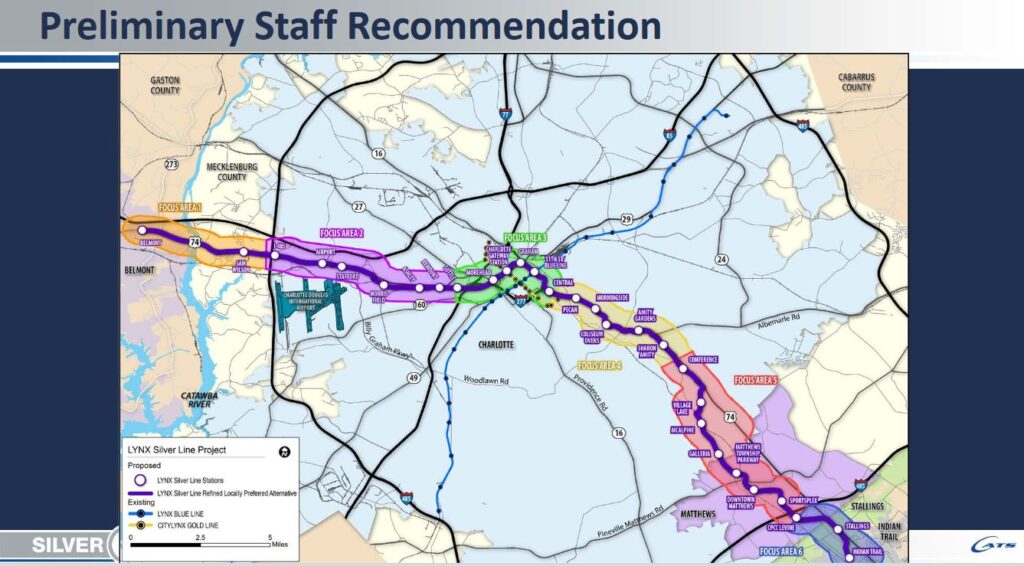
Planning and designing a 26-mile light rail line is no quick task! LYNX Silver Line Senior Project Manager Andy Mock gave a presentation about the steps that have already been taken and what’s coming in the next few months. Mr. Mock explained that the Preliminary Staff Recommendation (shown in the map above) is somewhat like drawing a line on a map with a fat marker. Now CATS needs to gather public input to affirm the details by “zooming in” on each of six geographic focus areas ranging from #1 connecting with Belmont across the Catawba River through the heart of Charlotte and all the way to #6 into the Town of Matthews.
CATS will host six virtual public meetings between February 16th and March 2nd. All will be at 5:30 p.m. Details of the meetings will be posted on the Silver Line project page.
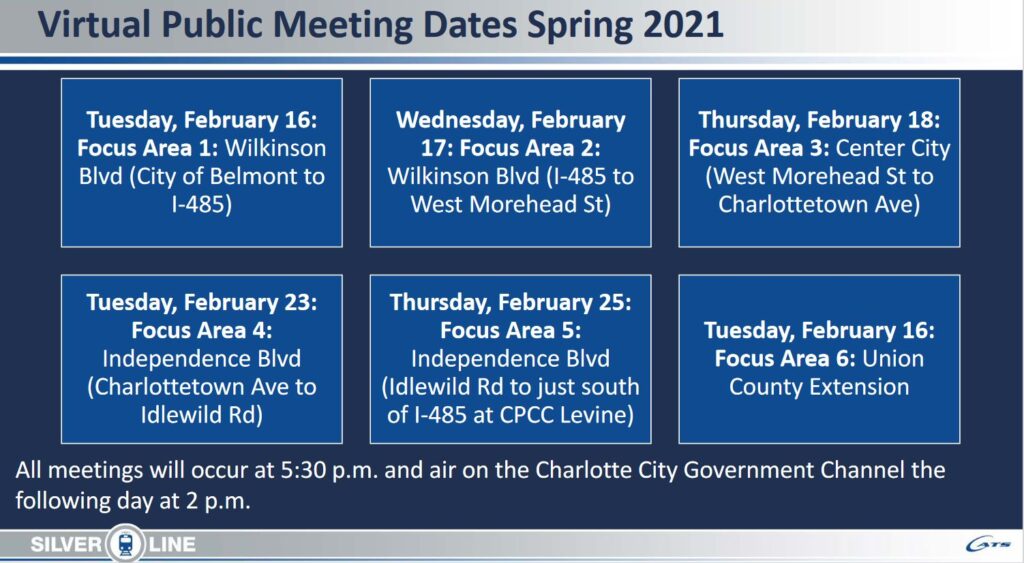
There is no single magic alignment that will eliminate all risks and provide all benefits. CATS is combining their own technical analysis with public feedback to work towards affirming a Locally Preferred Alternative that optimizes the following factors:
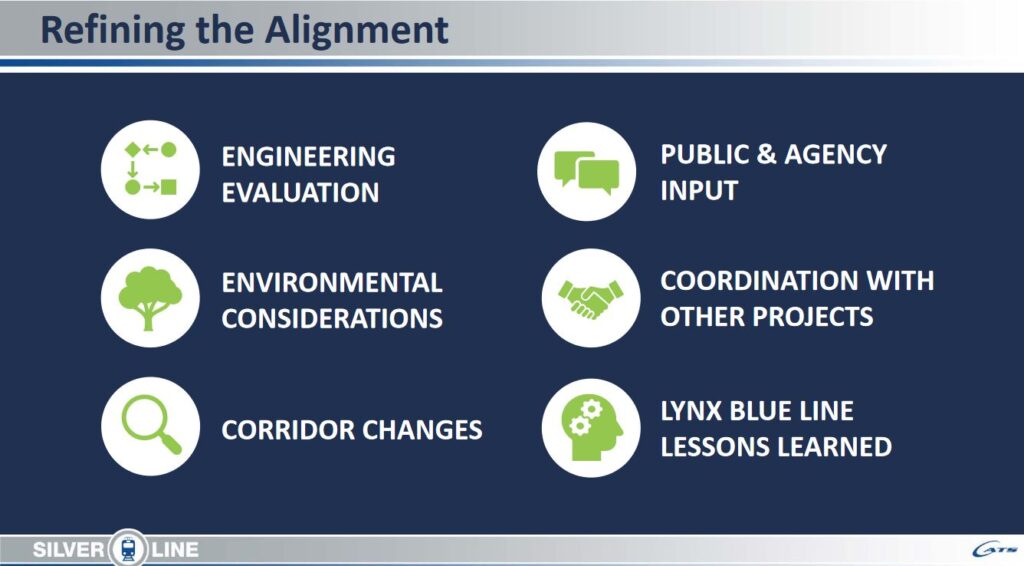
Council member Braxton Winston (At Large) asked that CATS planning for the Silver Line should be done in a way that doesn’t preclude possible future removal of I-277. We agree that this interstate is a major physical barrier in Charlotte that may well be removed at some point in the future, so it would be wise to not plan the Silver Line’s success to hinge on the ongoing existence of I-277!
Don’t miss your chance to help shape Charlotte’s future growth!
Charlotte Future 2040 Comprehensive Plan Project Manager Alysia Osborne updated the committee on the process that will take place between now and April to receive and review public comment before Council adopts the plan in April. The Charlotte Future 2040 Comprehensive Plan is the long-range plan that will guide the development and investments made in our city over the next two decades.
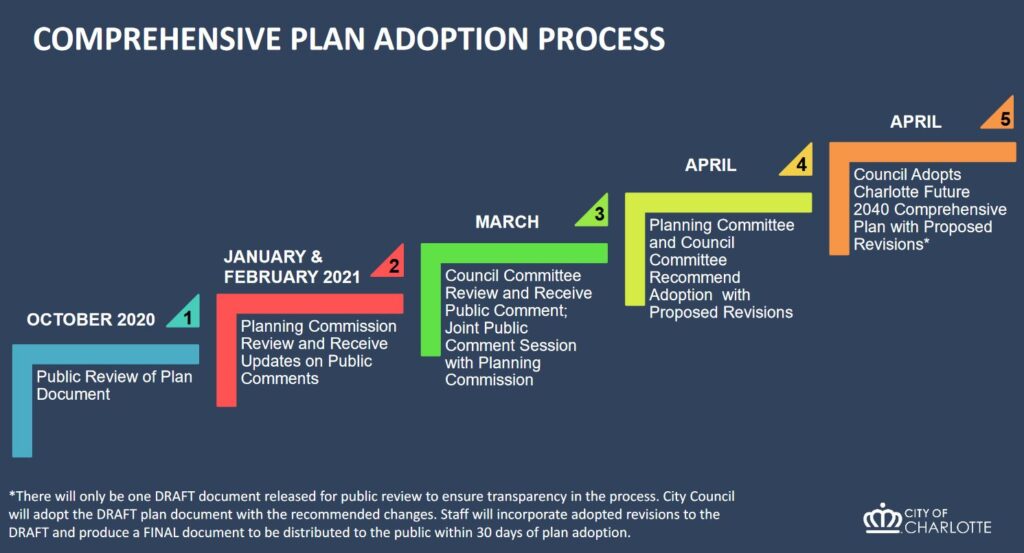
There are so many ways to get involved! View the plan document here and then choose how to give your comments: online, by e-mail, by phone or by mail.
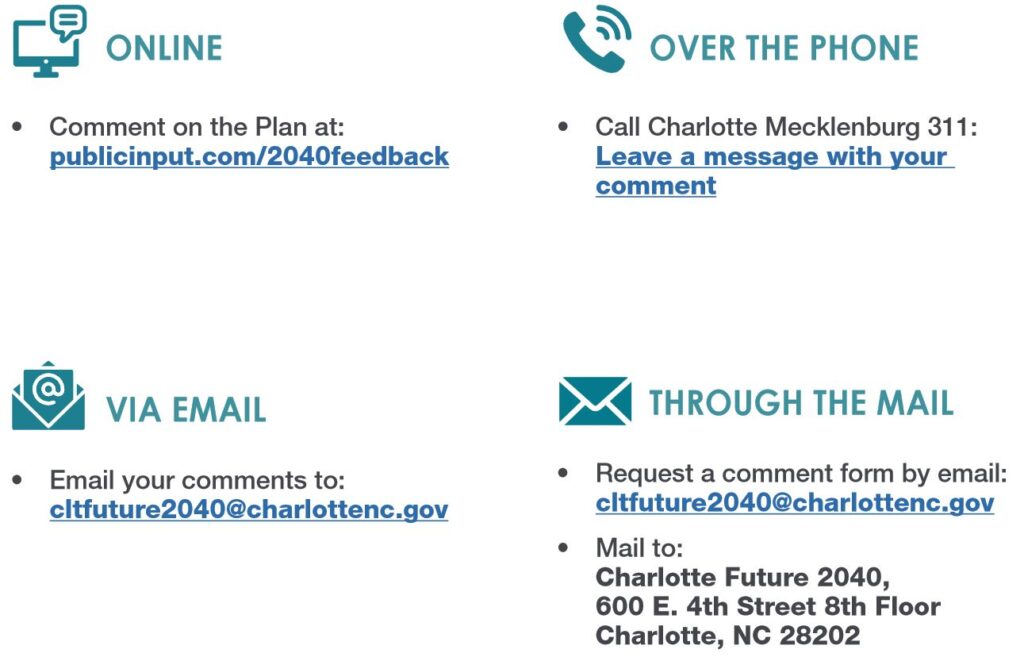
We hope you’ll take a look at the plan document and choose your preferred method to give input to the team. Please let them know that you value a strong vision that will shape the future of the places we live, work, shop, and play!
Thanks for reading!
As a nonprofit, community support is essential for us to keep doing what we do — including providing free articles like this. If you found this article helpful, please consider supporting Sustain Charlotte.
Want to stay in the loop? Subscribe to our weekly newsletter and follow us on Instagram, Facebook, and Twitter.
